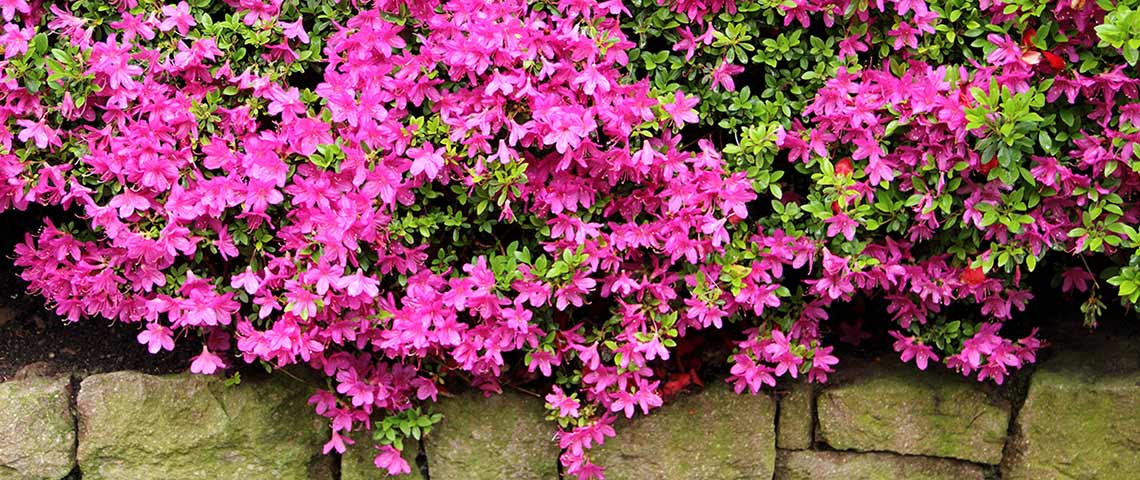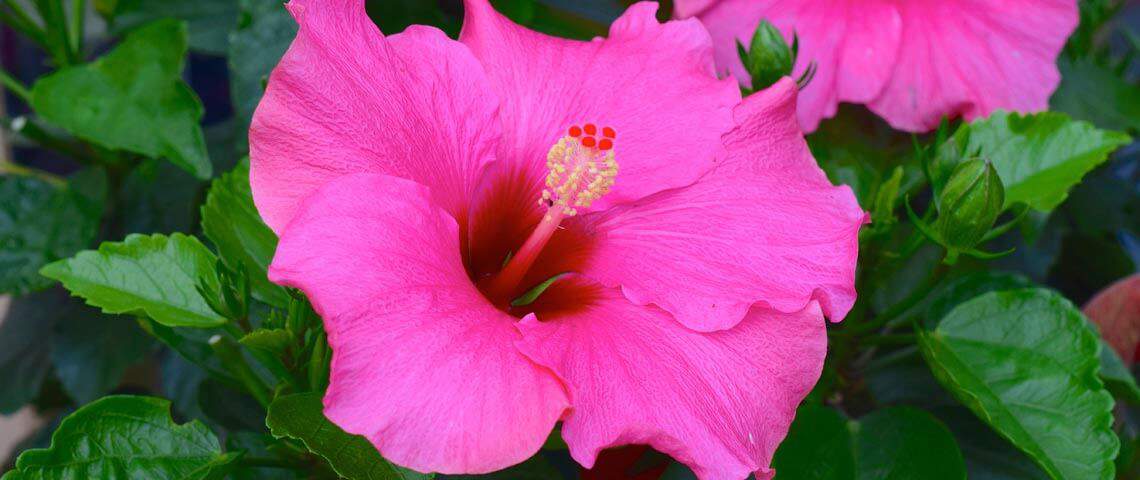How to Grow and Care for Rhododendrons

Springtime promises homeowners and gardeners plenty of reasons to "ooh" and "aah," but few top the sight of rhododendrons in full bloom. These flowering shrubs light up landscapes with spring blossoms, and their lustrous, evergreen leaves add beauty year-round. Growing rhododendrons isn't difficult as long as you meet their special needs.
These rhododendron basics can help you grow and enjoy beautiful rhododendrons for all to see:
- How to Choose Rhododendrons for Your Garden
- How to Plant Rhododendrons Properly
- How to Water Your Rhododendrons
- How to Fertilize Your Rhododendrons
- How to Protect Your Rhododendrons
- How to Prune Rhododendrons for Maximum Blooms

Rhododendrons deliver traffic-stopping spring blooms.
How to Choose Rhododendrons for Your Garden
Many people connect rhododendrons with Eastern woodlands and estate gardens, but rhododendrons suit home landscapes nationwide. Dazzling your neighbors with these beauties depends on choosing rhododendrons that suit your site. Keep these considerations top-of-mind:
- Cold hardiness. As with all spring-blooming shrubs, rhododendrons carry their flower buds through winter months. Spring blossoms don't happen unless those buds survive the cold. Fortunately, even northern gardeners have options. Some bud-hardy rhododendrons withstand temperatures as low as minus 30 degrees Fahrenheit.1 If you're unsure which types to choose, your local county extension agent can help.
- Mature size. Rhododendrons span a wide range of sizes, from miniature ground-covering varieties to soaring, tree-like types. To maximize beauty — and minimize maintenance — know your plant's mature height and width before you buy. Always buy varieties that will fit your planting site once they're fully grown. Many landscape-friendly rhododendrons mature between 3 to 6 feet tall and wide.
- Bloom time and color. While rhododendrons tend to bloom early in the year, some types bloom earlier or later than others. Colors and flower shapes vary with variety as well. Plant tags and plant descriptions can help you decide which varieties sound best, but buying plants in bloom ensures that's what you'll get.
How to Plant Rhododendrons Properly
Growing healthy, attractive rhododendrons depends in part on choosing the perfect site and planting right. In warm climates, fall planting allows shrubs to settle in before summer heat arrives. In northern climates, winter comes fast; spring planting helps rhododendrons get established and thrive. These considerations are key to selecting your planting spot:
- Light conditions. Rhododendrons flourish in dappled shade reminiscent of their native woodlands. Too much sun turns their foliage brown and burned, but too much shade means fewer blossoms. Choose a site that gets good morning sun or filtered sun all day. In southern climates, choose sites that protect rhododendrons from intense midday and afternoon rays.
- Soil conditions. Often referred to as "acid-loving plants," rhododendrons do best in acidic soils where the pH is between 4.5 and 6.0.2 If soil pH is within that range, nutrients that support beautiful rhododendron foliage and flowers stay available for plant use. Outside that range, rhododendrons suffer pale, yellow leaves. With a simple soil test, you can find out your soil pH and adjust it with soil amendments accordingly.
- Drainage. Rhododendron roots need lots of oxygen. Poor drainage leads to root rot and early demise. To improve drainage before you plant, layer 3 to 4 inches of organic matter, such as compost or pine bark, over the site. Then work that material into the top 6 to 8 inches of soil. Incorporating garden gypsum can help improve heavy clay as well.
Dig your planting hole so it's slightly less deep than your plant's root ball, but twice as wide. Then mix 1 to 2 cups of Pennington Rejuvenate Plant Food Evergreen & Azalea 4-3-3 into the soil at the hole's bottom, according to label instructions, making sure the fertilizer won't contact sensitive rhododendron roots.
Position the plant so the top of its root ball sits slightly higher than the surrounding soil. Then fill in around the plant and water it well. As a finishing touch, cover the area with a 3-inch layer of organic mulch to help regulate soil moisture and temperature. Always keep mulch a few inches away from the plant's trunk.

Proper fertilizing helps keep rhododendrons beautiful and strong.
How to Water Your Rhododendrons
Compared to other common landscape plants, rhododendrons have very shallow roots. This helps ensure they get plentiful oxygen, but it also leads to stress if the soil dries out. Before you water, pull back some mulch and touch the soil with your hand. Water when soil feels dry to the touch, but underlying soil stays moist. This means watering more during hot, dry periods and watering less in cooler, wetter times.
When you water, water the soil around the plant, extending out as far as its branches reach. Water deeply and thoroughly so your plant receives about 1 inch of water, including rainfall, per week. If possible, use drip irrigation to avoid runoff and discourage the fungal diseases that can strike wet leaves.
How to Fertilize Your Rhododendrons
Pennington Rejuvenate Plant Food Evergreen & Azalea 4-3-3 provides just the right blend of primary nutrients to support attractive rhododendron blooms and foliage. Plus, this premium specialty fertilizer includes iron to help prevent nutritional deficiencies and keep foliage beautiful.
Follow the label instructions for established shrubs, and sprinkle 2 to 3 cups of Pennington Rejuvenate Plant Food Evergreen & Azalea 4-3-3 in the 10 square feet around the plant.
How to Protect Your Rhododendrons
Rhododendrons are susceptible to insect and diseases, such as weevils, lace bugs, and powdery mildew. Visible signs can be white, fluffy leaves, wilted and brown leaves, or holes in branches. Sevin Sulfur Dust starts killing immediately upon contact and will not harm the plant. Apply a light dusting or spray frequently to keep your rhododendrons healthy and free from insect and disease damage.

Avoid late-season pruning or you may remove flower buds before they bloom.
How to Prune Rhododendrons for Maximum Blooms
When rhododendrons fit their space well, you rarely need to prune. If you want to do some minor shaping, timing is critical to next spring's blooms. The buds that become spring flowers form on stems in the summer of the previous year, long before you can see they're there. If you prune your rhododendron's "old wood" in late summer through winter — after those buds form — you're removing next spring's flower buds in the process.
To maximize your spring display, always prune rhododendrons right after they finish blooming — before new flower buds form. Remove dead or damaged branches any time of year. Schedule any major pruning projects for late winter when the plant is dormant. Just remember that late-season pruning equals lost blooms.
By following these basics, you and your neighbors can enjoy spectacular rhododendrons that beautify your landscape year-round. At Pennington, we're committed to bringing you top-quality educational resources and the finest lawn and garden products possible, so you can enjoy a landscape you're proud to own.
Always read the product label and follow instructions carefully.
Pennington is a registered trademark of Pennington Seed, Inc.
GardenTech is a registered trademark of Gulfstream Home and Garden, Inc.
Sevin is a registered trademark of Tessenderlo Kerley, Inc.
Sources:
1. The Morton Arboretum, "Rhododendron PJM."
2. Clemson Cooperative Extension, "Rhododendron."



